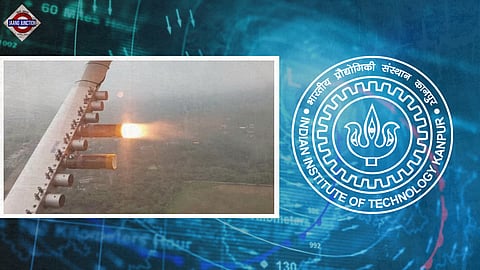

After years of hard work, the Indian Institute of Technology-Kanpur (IIT-K) has successfully tested artificial rain or cloud seeding technology. The study was started a few years ago at IIT Kanpur by professor Manindra Agrawal.
For the fake rain project, a plane was flown to a height of 5000 feet from IIT's airfield.
What exactly is cloud seeding and how does it function?
Cloud seeding is a weather manipulation technique that involves inserting small ice nuclei into particular types of subfreezing clouds in order to affect the amount or type of precipitation that falls from clouds. Clouds are implanted with particles such as silver iodide crystals, which act as ice-forming nuclei to aid in the formation of snowflakes.
Cloud seeding can alter clouds and induce rain by causing rain to fall when none would naturally fall or by increasing the amount of rain that falls over a certain area. Cloud seeding is often accomplished by spraying particles from a plane. The newly produced snowflakes expand swiftly and fall from the clouds to the Earth's surface, increasing snowpack and streamflow. Before cloud seeding to be deemed a cost-effective water supply alternative, a number of conditions must be met.
There is no longer any need to wait for clouds to form in order to get rain. It can rain in every weather and under any conditions. Yes, thanks to the efforts of IIT Kanpur, this is now a reality. After years of research and tests IIT Kanpur have finally achieved success in cloud seeding.
The experiment was carried out with the approval of the civil aviation regulator, DGCA.
This artificial rain project was driven by Manindra Agrawal, professor of Computer Science and Engineering at IIT Kanpur. He stated, "Our capabilities in this direction have been successfully tested."
After the Uttar Pradesh government reached out to help Bundelkhand with artificial rains in 2017, it took IIT-Kanpur six years to make this happen. China has agreed to perform cloud seeding in Mahoba for 10.30 lakh per kilometre at the time. However, it refused to share the know-how, and the proposal was abandoned.
This accomplishment opens the door to the possibility of generating rainfall in drought-prone areas of Uttar Pradesh, providing hope to agricultural populations battling water constraint.
